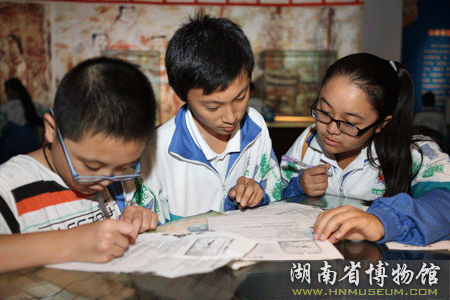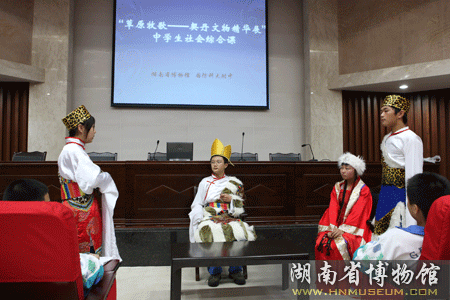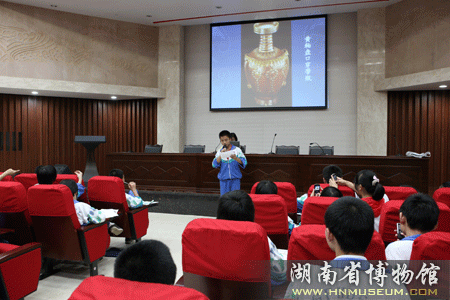- 中文
- EN
- Français
- 日本語
- 한국어
- 繁體中文
Practice Course of Middle School Students on “Pastoral on the Grassland” Successfully Held
The afternoon of September 30 witnessed a complete success in the new Exhibition Hall of Hunan Provincial Museum achieved through the history practice course on the theme of “Pastoral on the Grassland: Best Collections from Qidan Cultural Relics” (Qidan once was a nomadic tribe in North China) which was co-held by the Museum and Attached Middle School, University of Science and Technology for National Defense. Over 110 junior middle school students from this school attended this course.
Cooperatively, students fill out the work sheets together.

Chanyuan Treaty, a student-produced playlet, is on.
(Chanyuan Treaty refers to the treaty signed by Northern Song and Liao in 1004AD in Chanyuan, the now Puyang City in Henan Province.)
Combined with the standards and schedule of history course, this activity was designed to be three steps: pre-visit preparation, individual research during visit and after-visit outreach. Since September 21, students have watched the video Qidan Dynasty, obtained the basic knowledge about Qidan people in various forms such as teacher’s lectures, etc. and collected relevant material so as to be fully prepared for the visit. On 30, by means of team work, they finished the work sheets of “Return to Daliao (916-1125): A Journey to the Past” that were elaborately designed by the museum, which expanded their knowledge on cultural relics, brilliant history of Qidan and its cultural diversity. In the outreach program, they were organized to watch Chanyuan Treaty, a student-produced playlet in museum’s Multifunctional Lecture Hall, which won their prolonged warm applauses; a follow-up contest of students competing to sell their commodities with Qidan characteristics pushed the activity to a climax. At last, the winners of “Most Popular Commodity Prize” and “Best Merchant” were elected.

A student acts as a merchant to sell his commodity.
This course provides the students with the good opportunities to better understand Qidan people and the profound meaning of “co-existence of ethnocracies”, to improve cognitive and thinking competence and establish the right ethnicity outlook, thus fully demonstrating the educational function of the museum and favorably reviewed by teachers and students.



